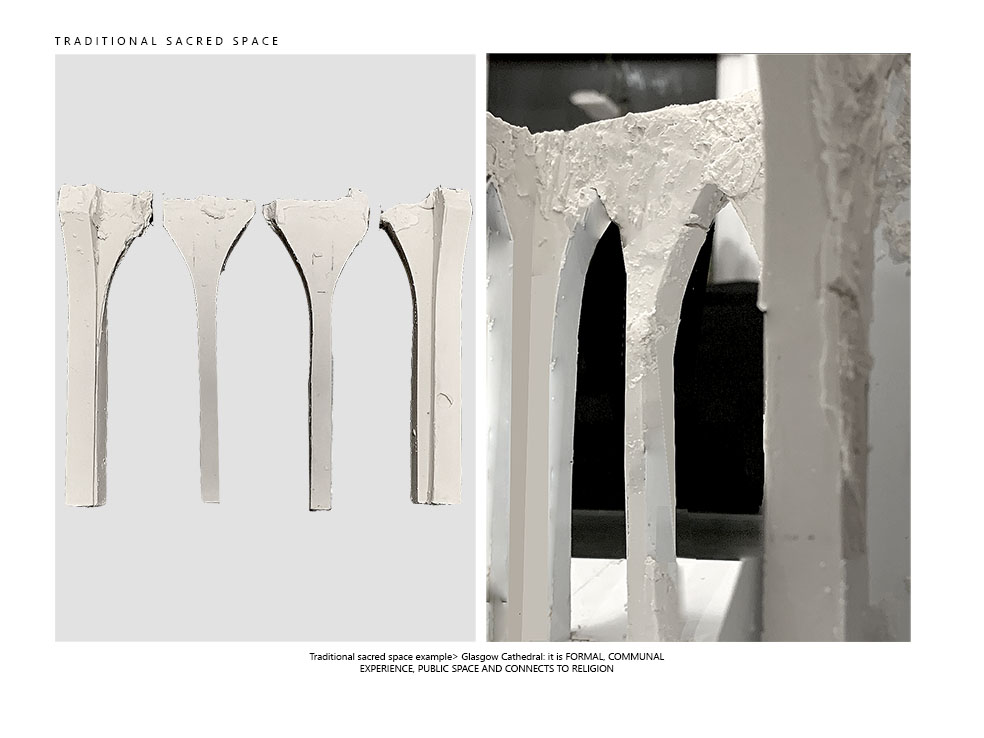Glasgow as a city did not begin to develop until 6th Century with the arrival of St. Mungo who established a religious community. The Glasgow Cathedral that exist today is the oldest sacred space in Scotland, and Glasgow established a religious centre by the 12th-13th Century. After founding the University of Glasgow in 15th century, Glasgow grew in religious importance.
After the Reformation, with the removal of the Roman Catholic church’s authority, Glasgow’s importance as a centre of trade began and took place of the church. Then with the Industrial Revolution, such things as iron founding and shipbuilding continued to develop Glasgow, diminishing the strong connection of people and sacred space.
I was interested in researching the cultural and historical heritage of Glasgow with sacred spaces, and how it has evolved through the centuries. Looking at the crucial components that is not directly associated with religion but direct us to spirituality. Thus looking at two contrasting ways in experiencing a sacred space to reflect: the relationship between the two, similarities, contrasts and how the fragments intertwine.
| TRADITIONAL | EVERYDAY |
| Formal | Informal |
| Communal Experience | Personal Experience |
| Public Space | Private Space |
| Religious | Spirituality |
Key Themes: History, Connection, Spirituality, Well-being



